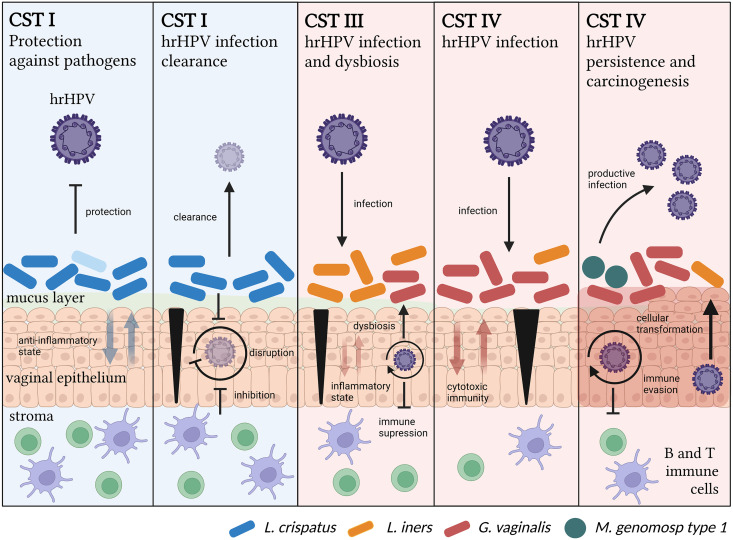FIG 2.
Temporal relationship between the microbiome and hrHPV. CST I is associated with protection against pathogens, including hrHPV, and hrHPV infection clearance. In this CST, the cervicovaginal microenvironment exhibits an anti-inflammatory state, allowing for effective immune responses against hrHPV and the disruption of its viral life cycle in the case of an infection. Alternatively, CST III is associated with susceptibility to hrHPV infections. In this community, the cervicovaginal microenvironment exhibits an increase in cytotoxic immune responses. Microwounds (marked in black) allow for productive hrHPV infections. The virus suppresses immune responses, which reduces the nutrient sources for Lactobacillus species and causes dysbiosis. CSTs IV are also associated with susceptibility to hrHPV infections, persistence, and carcinogenesis. In this CST, pathogenic bacteria induce the disruption of the mucus layer, which impairs anti-inflammatory immune responses and increases cytotoxic signals that destroy epithelial cells, thus allowing for productive viral infections. Dysbiosis, along with hrHPV persistence, eventually leads to cellular transformation and carcinogenesis.

